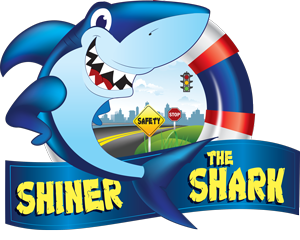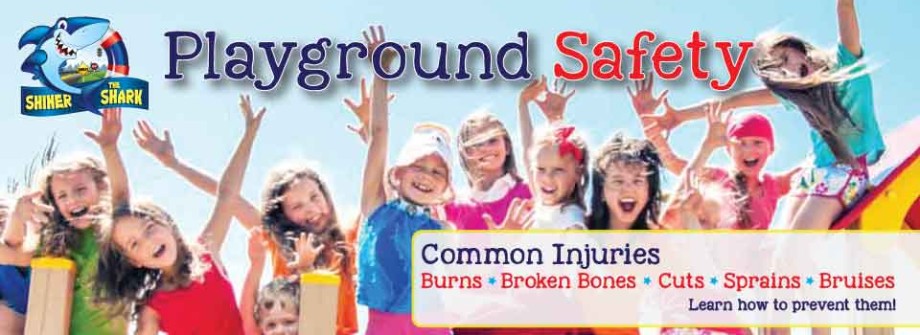During Playground Safety Week this year, the National Program for Playground Safety (NPPS) is providing a Kid Checker Checklist for children. We are asking children to check the safety of their playgrounds. We believe the playground is also an important outdoor classroom. To demonstrate this we offer the following fun examples to show how checking for safety can also teach math concepts.
Safety Measures
Head Entrapments: We know that one of the most serious problems occur when openings on playground equipment are greater than 3 ½” and less than 9 inches. This size of opening can allow the head to be entrapped and lead to strangulation and death.
How to Measure: To avoid head entrapments, spaces need to be less than 3 ½” or greater than nine inches. You can measure openings with a ruler or a dollar bill. A dollar bill is approximately 6” long, so the opening should be bigger than 1 ½ dollar bill size.
Falls To The Surface: Falls to the surface are the leading cause of injury to children on playgrounds. The concern is that the higher the equipment children fall from, the harder they fall and the more severe the injury could be. NPPS recommends the equipment for preschoolers (ages 2- 5) not be higher than 6 feet and equipment for school age children not be any higher than 8 feet.
How to Measure: To avoid severe injuries by falls to the surface, you can measure the height of the equipment with a tape ruler or by using a body measurement called the overhead reach.
Overhead Reach Method: Measure the height of a child plus the overhead reach of the hands. Use that height to measure the height of the equipment.
Depth of Surfacing: Another way children are severely injured is by falling to the surface that is not appropriate or not deep enough. Surfacing that should never be found under and around playground equipment includes asphalt, cement, dirt and grass.
Now you have your Playground ready for the little ones.
What’s next? http://www.safekids.org/tip/playground-safety-tips-pdf
Playground Safety Tips
Supervise Kids Using Playground Equipment – Avoid distractions – Texting, chatting on the phone etc…
- Actively supervise children on playgrounds. It won’t be hard – they’ll probably be calling for you to watch them climb, jump and swing.
- Check playgrounds where your children play. Look for age-appropriate equipment and hazards, such as rusted or broken equipment and dangerous surfaces. Report any hazards to the school or appropriate local office.
- Teach children that pushing, shoving or crowding while on the playground can be dangerous.
- Dress appropriately for the playground. Remove necklaces, purses, scarves or clothing with drawstrings that can get caught on equipment and pose a strangulation hazard. Even helmets can be dangerous on a playground, so save those for bikes.
- Little kids can play differently than big kids. It is important to have a separate play area for children under 5.
- Choose the Right Play Area Based on Your Child’s Age
- Ensure that children use age-appropriate playground equipment. Separate play areas for bigger kids and children under 5 should be available and maintained.
- For babies who are mostly crawling or at best learning to walk, the play area should have a smooth and easy surface to walk on.
- If your baby has fairly good head control and can sit up with support (usually around 9 months old), give the baby (bucket-shaped) swings a try.
- Ensure Safe Surfacing Beneath and Surrounding Playground Equipment
- Avoid playgrounds with non-impact absorbing surfaces, such as asphalt, concrete, grass, dirt or gravel.
- Recommended surface materials include: sand, pea gravel, wood chips, mulch and shredded rubber. Rubber mats, synthetic turf and other artificial materials are also safe surfaces and require less maintenance.
- Surfacing should be at least 12 inches deep and extend at least 6 feet in all directions around stationary equipment. Depending on the height of the equipment, surfacing may need to extend farther than 6 feet.
- For swings, make sure that the surfacing extends, in the back and front, twice the height of the suspending bar. So if the top of the swing set is 10 feet high, the surfacing should extend 20 feet.
- Check That Playgrounds Are Inspected and Maintained by Qualified Personnel
- Double check with your school and child care center to make sure they have age-appropriate, well-maintained playground equipment.
- If there are any hazards in a public or backyard playground, report them immediately and do not allow children to use the equipment until it is safe.
- Report any playground safety hazards to the organization responsible for the site (e.g., school, park authority or city council).
Does Your Playground Measure Up?
http://playgroundsafety.org/kids/math.htm
This information is sponsored by the Shiner Law Group. If your child is involved in an accident involving playground equipment leading to medical treatment, contact an accident attorney with the Shiner Law Group as soon as possible to learn of your legal options. Have Questions? Call Us 24/7 561-368-3363, TOLL FREE: 855-368-3363

